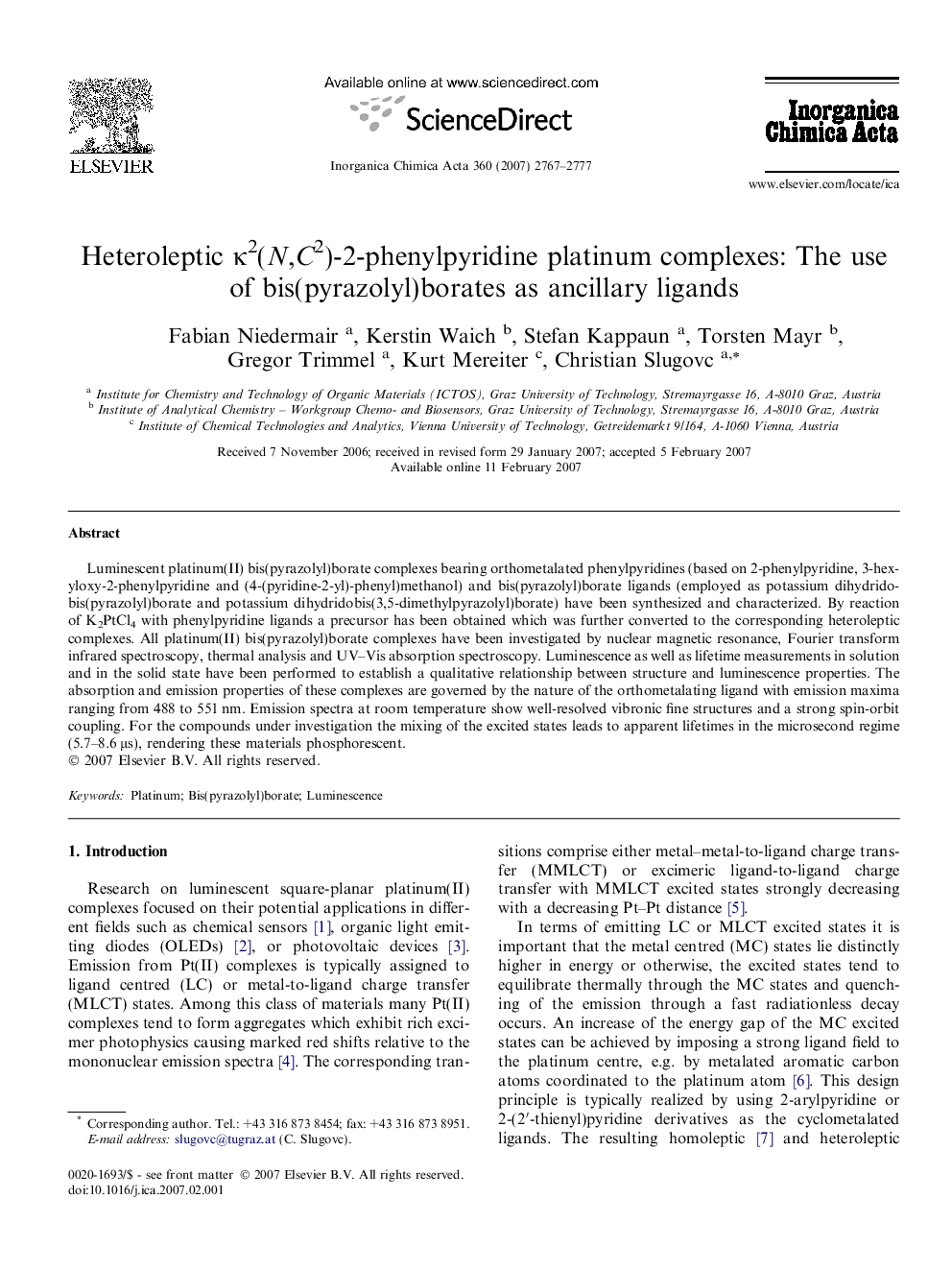| Article ID | Journal | Published Year | Pages | File Type |
|---|---|---|---|---|
| 1309653 | Inorganica Chimica Acta | 2007 | 11 Pages |
Luminescent platinum(II) bis(pyrazolyl)borate complexes bearing orthometalated phenylpyridines (based on 2-phenylpyridine, 3-hexyloxy-2-phenylpyridine and (4-(pyridine-2-yl)-phenyl)methanol) and bis(pyrazolyl)borate ligands (employed as potassium dihydridobis(pyrazolyl)borate and potassium dihydridobis(3,5-dimethylpyrazolyl)borate) have been synthesized and characterized. By reaction of K2PtCl4 with phenylpyridine ligands a precursor has been obtained which was further converted to the corresponding heteroleptic complexes. All platinum(II) bis(pyrazolyl)borate complexes have been investigated by nuclear magnetic resonance, Fourier transform infrared spectroscopy, thermal analysis and UV–Vis absorption spectroscopy. Luminescence as well as lifetime measurements in solution and in the solid state have been performed to establish a qualitative relationship between structure and luminescence properties. The absorption and emission properties of these complexes are governed by the nature of the orthometalating ligand with emission maxima ranging from 488 to 551 nm. Emission spectra at room temperature show well-resolved vibronic fine structures and a strong spin-orbit coupling. For the compounds under investigation the mixing of the excited states leads to apparent lifetimes in the microsecond regime (5.7–8.6 μs), rendering these materials phosphorescent.
Graphical abstractA series of platinum(II) complexes featuring dihydridobis(pyrazolyl)borate and dihydridobis(3,5-dimethylpyrazolyl)borate as the ancillary ligands and 2-phenylpyridine, 3-hexyloxy-2-phenylpyridine or (4-(pyridine-2-yl)-phenyl)methanol as the metalated ligands have been prepared and a qualitative relationship between structures and luminescence properties was established.Figure optionsDownload full-size imageDownload as PowerPoint slide
